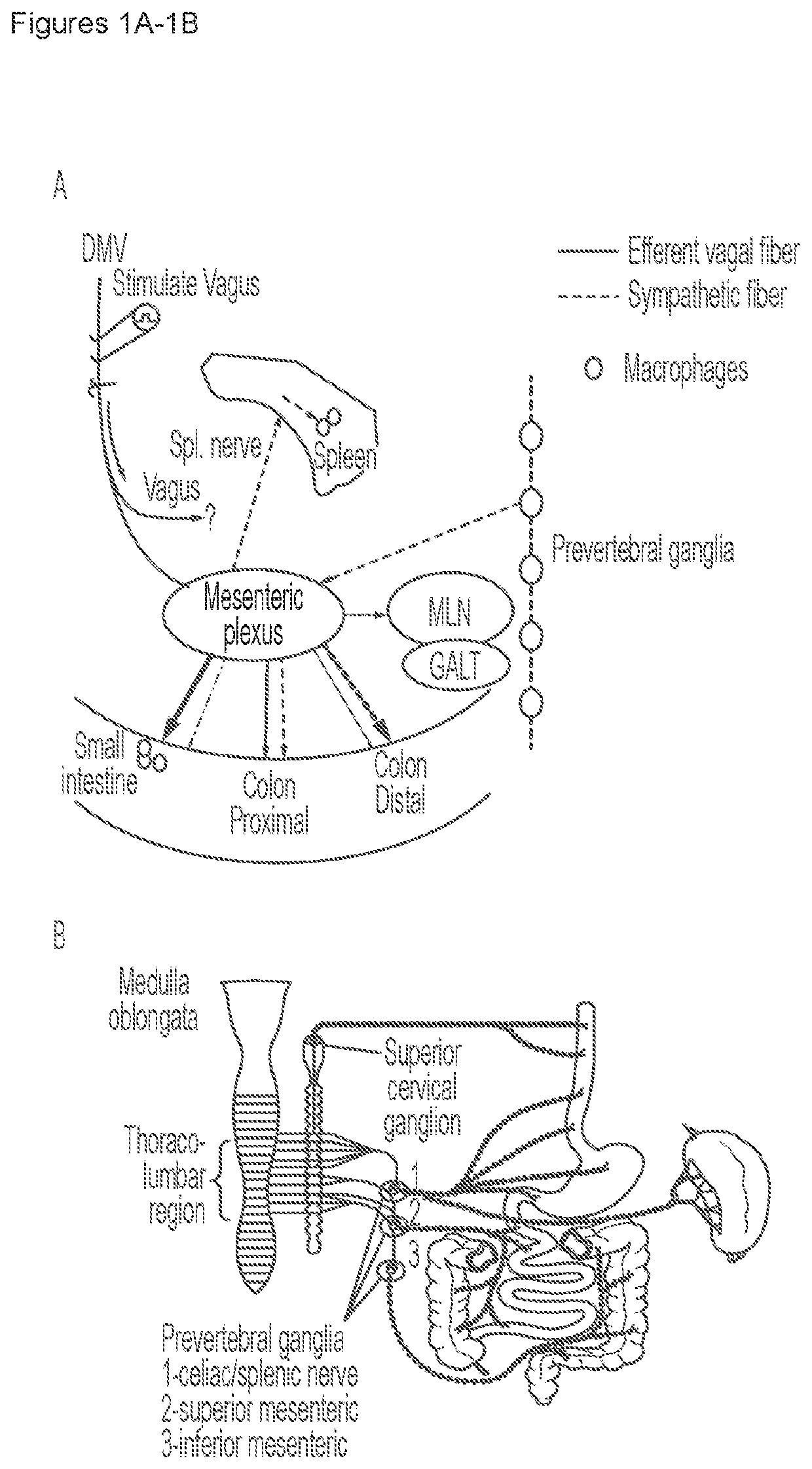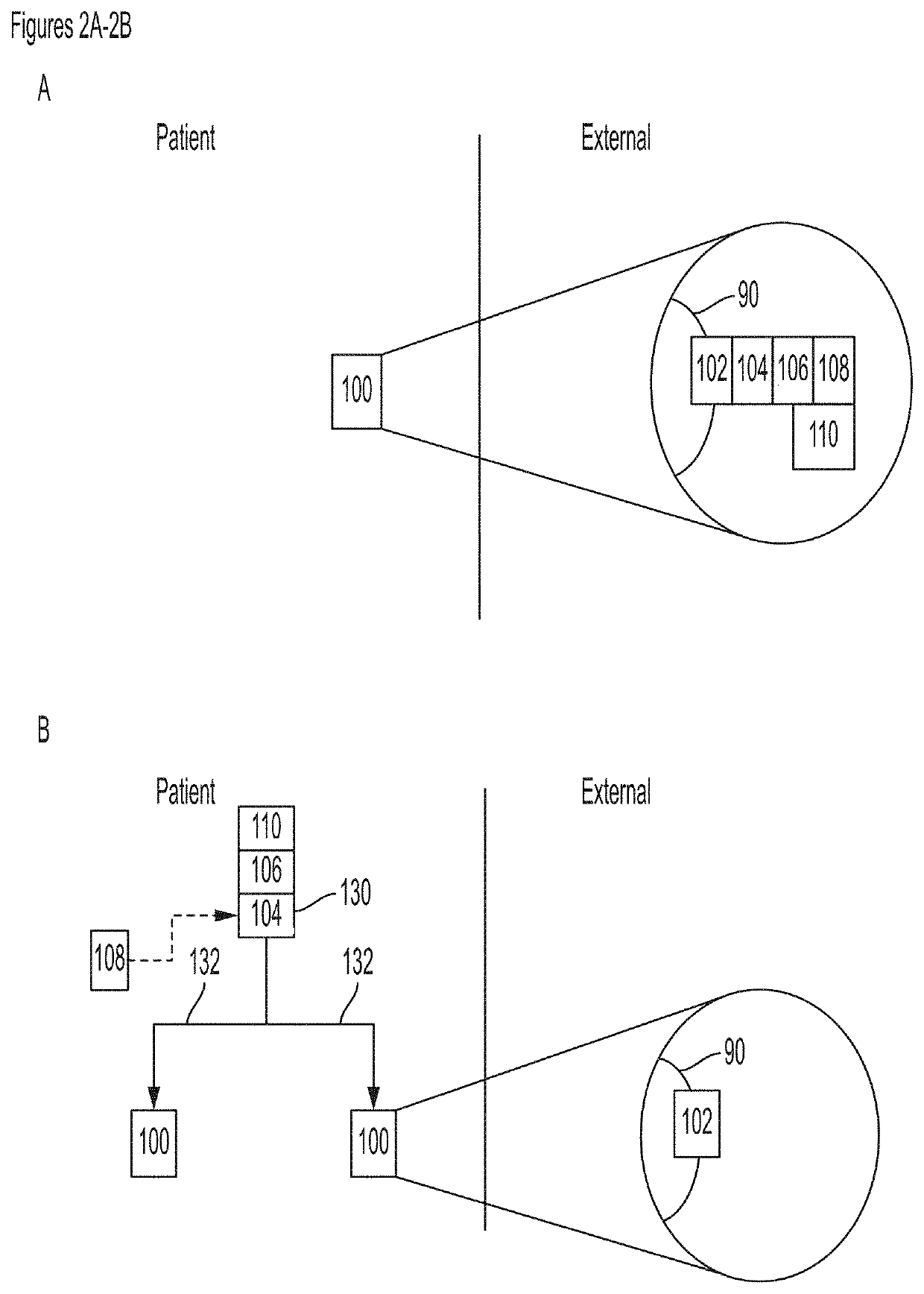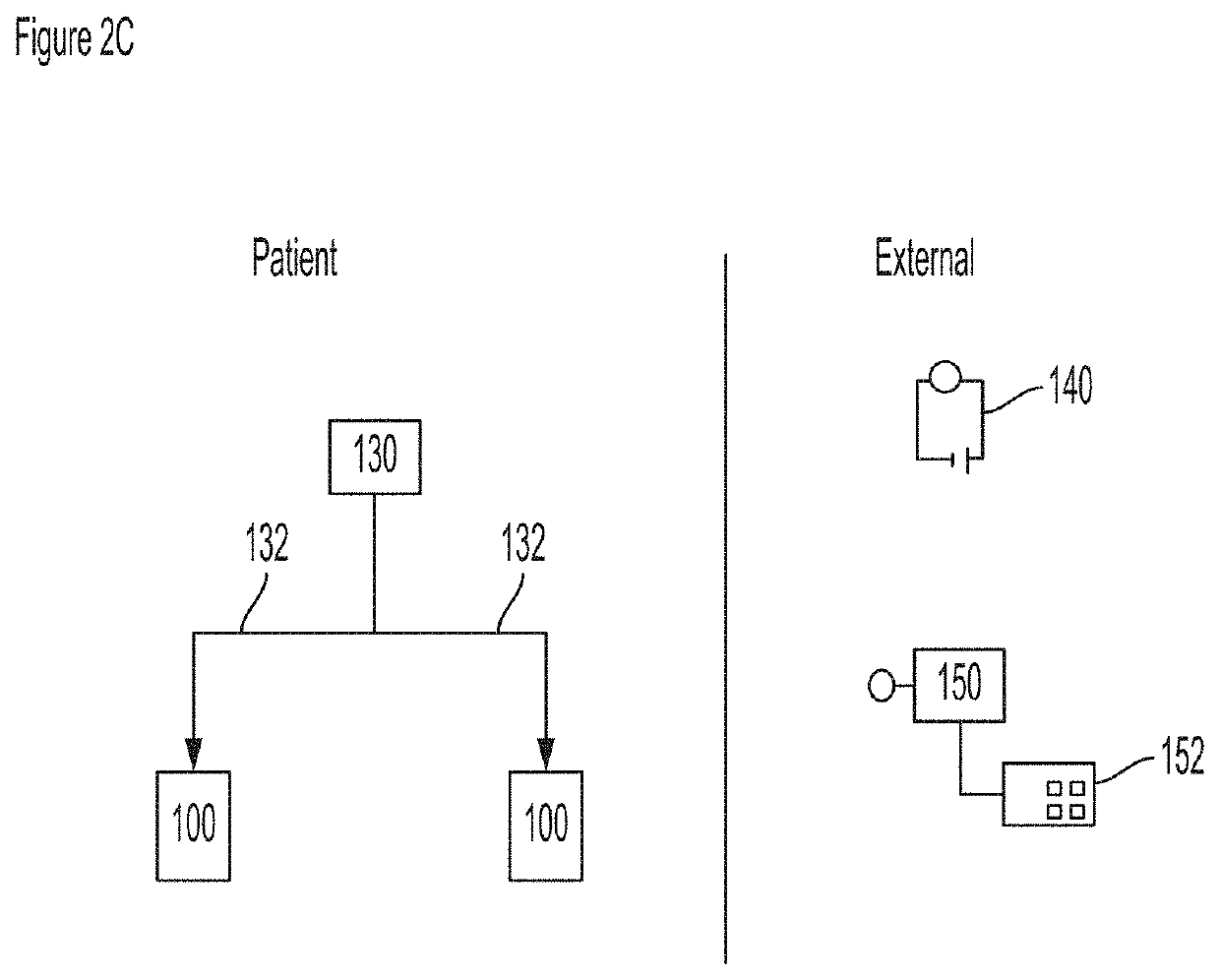Neuromodulation device
a neuromodulation device and neuromodulation technology, applied in the direction of artificial respiration, drug compositions, therapy, etc., can solve the problems of limited ability to elicit anti-inflammatory effects, achieve limited ability to elicit, increase norepinephrine levels, and increase inflammation measures
- Summary
- Abstract
- Description
- Claims
- Application Information
AI Technical Summary
Benefits of technology
Problems solved by technology
Method used
Image
Examples
example 1
f Denervation in Animal Models of Colitis
[0278]Surgical sympathetic denervation (sympathectomy) of the colon and vagal denervation plus sympathetic denervation of the colon was performed as follows.
[0279]Mice
[0280]Standard eight to 12 week old C57 / B16 pathogen free mice (weight range of 18-20 grams) were obtained from Charles River Laboratories (Maastricht, The Netherlands) and co-housed in the specified pathogen free animal facility at the Academic Medical Centre (Amsterdam, The Netherlands). Animals were housed under standard IVC conditions with a 12 / 12 light / dark cycle under constant conditions of temperature (20+ / −2° C.) and humidity (55%) and ad libitum food and water. All experiments were performed under fentanyl-fluanisone (Hypnorm; Janssen, Beerse, Belgium)-midazolam (Hypnorm; Janssen, Beerse, Belgium) (FFM). All experiments were performed in accordance with the guidelines of the Laboratory Animal Use of the Netherlands and approved by the Ethical Animal Research Committee o...
example 2
tion of Effective Signal Parameters
[0337]In acute anaesthetised preparations rats and mice were subjected to square wave pulse electrical stimulation of the splenic nerve, superior mesenteric plexus or vagus nerves, using bipolar hook electrodes. Stimulation frequencies were kept consistent at 10 Hz, biphasic pulses with a pulse width of 50 μs. Current was varied between 1 mA and 10 mA. The duration of stimulation was either 2 or 10 minutes. 1 mA for 2 minutes was observed to be the most effective at inducing NE release (See FIGS. 7A-7B and below).
[0338]A cuff electrode was also developed for the superior mesenteric nerve that allowed encapsulation of the superior mesenteric plexus together with the mesenteric artery. The diameter of the cuff was determined to be optimal at 500 um and 5 mm in length to interface with that anatomy. A tripolar configuration of electrodes allows for current to be delivered within the centre of the cuff without significant current leakage out to surroun...
example 3
lation Via the Superior Mesenteric Plexus
[0349]Stimulation of the SMP was achieved used implanted cuff electrodes attached to the Mesenteric Nerve. Implantation was performed surgically prior to experimentation.
[0350]FIG. 10 shows the timeline of surgical implantation, gift of DSS to induce colitis, stimulation paradigm for electrical stimulation of the SMP, and day of sacrifice and analyses of biomarkers of disease.
[0351]FIGS. 11A-11D show the experimental outcomes of the SMP stimulation intervention in DSS colitis in rat, as in FIG. 10. Shown are the visualisation of the improved endoscopy appearance of colon at day 9 of DSS colitis under sham and stimulated condition. Further, FIG. 11B shows clinical parameters of improved colon weight / length ratio measured in rat colons at day 9 of DSS colitis. Further, improved clinical parameters of colitis at day 9 of DSS were seen in rats undergoing stimulation of SMP, as parameters such as diarrhea and blood in stool. The stimulation treatm...
PUM
| Property | Measurement | Unit |
|---|---|---|
| frequency | aaaaa | aaaaa |
| size | aaaaa | aaaaa |
| frequency | aaaaa | aaaaa |
Abstract
Description
Claims
Application Information
 Login to View More
Login to View More - R&D
- Intellectual Property
- Life Sciences
- Materials
- Tech Scout
- Unparalleled Data Quality
- Higher Quality Content
- 60% Fewer Hallucinations
Browse by: Latest US Patents, China's latest patents, Technical Efficacy Thesaurus, Application Domain, Technology Topic, Popular Technical Reports.
© 2025 PatSnap. All rights reserved.Legal|Privacy policy|Modern Slavery Act Transparency Statement|Sitemap|About US| Contact US: help@patsnap.com



